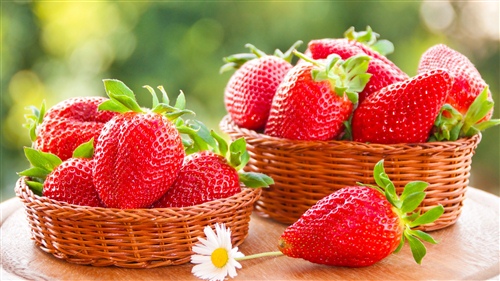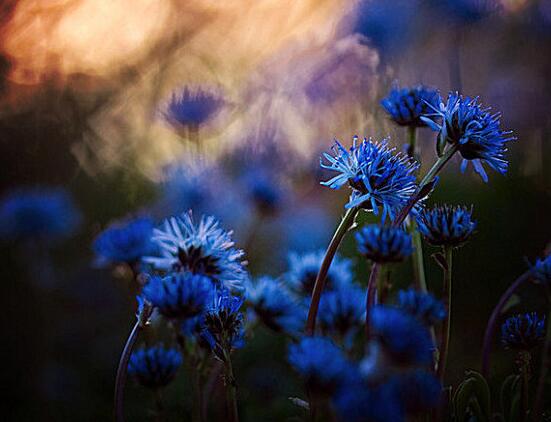
The Summer Palace can be divided into two parts: Longevity Hill and Kunming Lake. The whole garden covers an area of 290 hectares, of which three- fourths consists of a lake and rivers. This imperial garden features 3,000 room-units and covers an expanse of 70,000 square meters with more than 100 picturesque spots of interest. The layout of the Summer Palace includes three groups of architectures: palaces where the emperor attended to state affairs, resting palaces of the emperor and empress, and sightseeing areas. Entering the East Gate we will come the office quarters. Entering the East gate we will come to the office quarters. The annex halls on both sides were used for officials on duty.
This is the Gate of Benevolence and Longevity. Above the door there is a plaque bearing the same name in both Chinese and Manchurian characters. The gigantic rock in the foreground is known as Taihu rock, or eroded limestone, quarried in Jiangsu Province and placed here to decorated the garden.
On the marble terrace sits a bronze mythical beast, known as Qilin or Xuanni. It was said to the one of the nine sons of Dragon King. A point of peculiar interest is that it has the head of a dragon, antlers of a deer, the tail of a lion and hooves of an ox, and is covered with a unique skin. IT was considered an auspicious creature that brought peace and prosperity.
This grand hall is the Hall of Benevolence and Longevity. It was built in 1750, and was known as the Hall of Industrious Government. Emperor Qianlong ruled that the halls where monarchs attended to state affairs would be named after them. After the rebuilding of the Summer Palace, the hall was renamed, suggesting that benevolent rulers would enjoy long lives.
The arrangement of the hall has been left untouched. In the middle of the hall stands a throne made of sandalwood and carved with beautiful designs. In the background there is a screen carved with nine frolicking dragons. On either side of the throne there are two big fans made of peacock feathers, two column-shaped incense burners, crane-shaped lanterns and an incense burner assuming the form of Luduan, a mythological animal which was suppose to have the power to prevent fire. The small chambers on eight side were where the Emperor Qianlong and Empress Dowager Cixi rested and met officials on formal occasions.
On the verandah in the foreground of the hall there are bronze statues of dragon and phoenixes which served as incense burners on major occasions. They are hollow and smoke comes through holes on their backs. Also on the veranda are Tai Ping (Peace) bronze water vats made during the reign of Emperor Qianlong. As a precaution in case of fire, a fire was lit underneath the vats in the winter to keep the water in them from freezing.
(At the entrance of Garden of Virtuous Harmony)
Outside the East Gate–in front of the Hall of benevolence and Longevity- in front of Garden of Virtuous Harmony-in front of the Grand Theater Building- a lakeside walk from the Garden of Virtuous Harmony to the Hall o Jade Ripples- in front of the o Jade Ripples- in front of the Yiyunguan (Chamber of Mortal Being)-Hall of happiness and longevity- in front of the Yaoyue (Chamber of Mortal Beings)-Hall of Happiness and Longevity-in front of the Yaoyue (Inviting the Moon) Gate of the Long Corridor- strolling along the Long Corridor- visiting an exhibition of cultural relics- in front of the Hall of Dispelling Clouds- inside the Hall of Dispelling Clouds- atop the Tower of Buddhist Incense- on a hilltop leading from the back door of the Tower of Buddhist Incense- on a hilltop leading from the back door of the Tower of Buddhist Incense- inside the Garden of Harmonious Interest –outside the south gate to Suzhou Shopping Street- atop the stone bridge inside the Suzhou shopping street –on the road from the south gate of suzhou shopping street- on the road form the south gate of suzhou shopping street to the marble boat- in front of the ruins of the Garden of complete spring –along the lakeside by the marble boat-boating on the Kunming Lake-leaving out through the East Gate.
(Outside the east gate)
Ladies and Gentlemen:
Welcome to the Summer Palace. (After the self-introduction of the guide -interpreter) I hope this will be an interesting and enjoyable day for you.
During our tour, you will be introduced to time honored historical and cultural traditions, as well as picturesque views and landscapes.
The construction of the Summer Palace first started in 1750. At that time, the Qing Dynasty was in its heyday and China was a powerful Asian country with vast territories. The monarch in power then was Emperor Qianlong. With supreme power and large sums of money, he summoned skillful and ingenious artisans from all over the country to carry out this construction work in honor of his mother's birthday. After 15 years and one seventh of the nation's annual revenue spent, the Garden of Clear Ripples was completed and served as a testimony to China's scientific and technological achievements. In 1860, this vast royal garden was burnt down along with the Yuanming Yuan (Garden of Perfection and Brightness) by Angol-French allied forces. In 1888, Empress Dowager Cixi reconstructed the garden on the same site and renamed it the Garden of Nurtured Harmony (Summer Palace). Characterized by its vast scope and rich cultural embodiments, the Summer Palace has become one of the most famous tourist sites in the world.
This is the main entrance to the Summer Palace-the East Gate On top of the eaves of the door there is a plaque bearing a Chinese inscription which means "Garden of Nurtured Harmony", whose calligrapher was Emperor Guangxu. The gate that you are now entering was used exclusively by the emperor, the empress and the queen mother. All others used the side doors.
当赏读完一本名著后,大家一定对生活有了新的感悟和看法,需要回过头来写一写
颐和园读后感1
我觉得颐和园是一个非常美丽的大公园。
首先,我来介绍颐和园的几处有名的地方,我们一开始进入了颐和园大门,然后我们再绕过大殿,就可以来到有名的长廊,那些长廊里面到处都是绿漆的柱子,还有红旗的栏杆,一眼望不到头。长廊居然有700多米长,分成273间。每一间的横栏上都画着五彩的画,画着人物花草风景,我认真的看这些画,感觉就像我们的生活,就像我们的环境,是如此的美丽,画家们也非常厉害,在这几千幅画里面没有哪两幅是相同的,这是代表画家,每一颗都是用心画的,值得我们敬佩,还有一句话是这样写的,长廊两旁栽满了花木,这一种花还没谢那一种花又开了,这让我感觉,这颐和园的花木都是非常的多,非常的美丽,花朵的生命力也是非常的强大,微风从左边的昆明湖上吹来,使人神清气爽,就像我们睡觉醒来之后,也是神清气爽。
就在颐和园最有名的地方有这个昆明湖。然后那个湖中有一个小岛,那个小岛应该不是别人建的的,我是这样觉得的,应该是自然形成的,可见小岛的生态环境应该是非常的好的,很多游人都走过长长的石桥,石桥是非常重要的,因为如果没有石桥,游人们都去不了这生态环境非常好的小岛,再说这石桥上的17个孔,叫做17孔桥,桥栏杆上有很多柱子,柱子上刻着小狮子,这和刚刚的话一模一样,说明:这些雕刻的那些柱子,还有柱子上雕刻的小狮子,都是各不相同的。
看完了颐和园,这么美丽的风景,我还是要说一句话,颐和园的风景真是太美了,我还要阅读这篇美丽的课文!
颐和园读后感2
昨天的
作者使用了浏览顺序来观赏颐和园,从前门走到大殿,作者只看大殿的外表,所以直接绕过大殿,来到长廊,作者把长廊的颜色说给我们听,长廊的柱子是绿色的,栏杆是红色的,这和其他的古物一样,很传统,加上两种原色很配,长廊特别长,一眼望不到尽头,它长700多米,分成273间,每一间都画着许多漂亮的图画,周围也有许多花草,显得特别长,特别美。
作者观赏了长廊,又来到了万寿山脚环。作者抬头一望,只看见许多佛香阁和宫殿,等到山上却看见了许多东西:茂盛的树木,玻璃屋顶和朱红的宫墙,昆明湖很绿,船在湖面慢慢地滑过,还能看见古老的建筑城里的`白塔。
看见了昆明湖,作者把十七孔桥描写下来,又说小狮子。
作者觉得御和园很美,所以把颐和园写得很美,非亲身体验过,又怎么知道呢?你一定很想去吧!
颐和园读后感3
今天,我们学习了一篇课文,课文的名字叫做《颐和园》,课文主要讲了:北京的颐和园是个美丽的大公园。
进了颐和园的大门,绕过大殿,就来到有名的长廊。绿漆的柱子,红漆的栏杆,一眼望不到头。这条长廊有七百多米长,分成273间。每一间的横槛上都有五彩的画,画着人物、花草、风景,几千幅画没有哪两幅是相同的。长廊两旁栽满了花木,这一种花还没谢,那一种又开了。微风从左边的昆明湖上吹来,使人神清气爽。
走完长廊,就来到了万寿山脚下。抬头一看,一座八角宝塔形的三层建筑耸立在半山腰上,黄色的琉璃瓦闪闪发光。那就是佛香阁。下面的一排排金碧辉煌的宫殿,就是排云殿。
登上万寿山,站在佛香阁的前面向下望,颐和园的景色大半收在眼底。葱郁的树丛,掩映着黄的绿的琉璃瓦屋顶和朱红的宫墙。正前面,昆明湖静得像一面镜子,绿得像一块碧玉。游船、画舫在湖面慢慢地滑过,几乎不留一点儿痕迹。向东远眺,隐隐约约可以望见几座古老的城楼和城里的白塔。
从万寿山下来,就是昆明湖。昆明湖围着长长的堤岸,堤上有好几座式样不同的石桥,两岸栽着数不清倒垂的杨柳。湖中心有个小岛,远远望去,岛上一片葱绿,树丛中露出宫殿的一角。游人走过长长的石桥,就可以去小岛上玩。这座石桥有十七个桥洞,叫十七孔桥;桥栏杆上有上百根石柱,柱子上都雕刻着小狮子。这么多的狮子,姿态不一,没有哪两只是相同的。
颐和园到处有美丽的景色,说也说不尽,希望你有机会去细细游赏。
这一课主要为我们讲解了颐和园的美丽风景,同时也为我们讲了万寿山、佛香阁、排云殿、昆明湖、十七孔桥等著名风景。
颐和园读后感4
今天我们学习了颐和园这一课,我仿佛也走进了颐和园,我们一起来看看这个大公园吧!
走进了颐和园的大门,就来到有名的长廊,长廊一眼望不到头,有七百多米长,分为273间。每一间的横栏上都画着画,有人物,风景,花草等,共几千幅,没有那两幅画是相同的。微风从昆明湖上吹来,使人神清气爽。走完长廊就是万寿山。万寿山上面是排云殿。从万寿山下来是昆明湖,湖中心有个小岛,游人走过石桥可以到小岛上玩。桥有十七个桥洞,所以叫十七孔桥。每个桥洞栏杆上都有石柱,柱子上雕刻着小狮子,形态不一,没有那两只是相同的。
学习了这篇文章,我都有一种想冲过去看看的感觉,真的好美呀!你想去吗?我们一起为这个目标而努力吧!
颐和园读后感5
风景秀丽的颐和园,吸引着每一位到北京的游客。颐和园中,有一条彩色画廊。这就是名传天下的“长廊”。
长廊,临昆明湖,傍万寿山,蜿蜒曲折。它东起乐寿堂之邀明月,穿过排云门直到万寿山西端的石丈亭,全长七百多米,共二百七十三间。长廊之上,雕梁画栋,一幅幅斑斓的彩画,更使它绚丽的无比风采迷人。这些画有园中牡丹,有池上荷花,有林中飞鸟,有水下游鱼,也有亭台楼榭、湖光山色。但最为引人驻足玩味的却是那一幅幅构图生动、形态逼真的人物故事画。画上说的是什么故事?画中人是谁?这些故事典出何处?
这一切不仅天真幼稚的儿童想知道,求知欲旺盛的青少年要了解,便是颇有阔历的成年人也感兴趣,至于那些远涉大洋前来访问的外国朋友就更想明了其内容了。遗憾的是,极少有人能原原本本地把这些故事都讲出来,更没有一部可供翻检的汇集成册的文字材料。长廊人物画故事,其时间跨越度极大,从远古时代的三皇五帝到封建社会的最后一个王朝。上下绵延五千年,其取材范围颇广。有历史故事、民间传说、古典小说、戏曲、神话、童话、诗词、典故等。其内容有的反映我国勤奋好学淑贤礼让的传统美德、有的记录风云变幻、沧海桑田的历史变迁;既有人民群众抗击侵略,反抗奴役的英雄业绩,又有各族人民友好交往的千古佳话。可以说,这本小册,是一部历史书,一卷风情画,又是一个了解五千年文明文化史的小窗口。
人们在长廊中漫步,是游览是休息,更是一种美的享受。当您离开颐和园的时候。美丽的长廊,动人的故事。还会留在您的印象中,当紧张的一天结束,您闲暇下来翻翻手头这本书,又会给您带来美好的回忆,无尽的乐趣当然这本图文并茂的小册子,还会成为您游览颐和园的一份珍贵的纪念品。
五月中旬,正直晴天艳日,与下午至颐和园。
作为国家四大名园之一,颐和园有着壮丽的艺术风采和恢宏的建筑风格,无论设计布局还是长廊宫殿,都凝聚着古国高超的艺术和劳动者的智慧汗水。
也许颐和园的历史不算久,但它所蕴含的建筑艺术、绘画艺术等具有绝对的价值,同样它承载的历史沧桑与使命是无可比拟的。
颐和建于前清乾隆年间,本为乾坤孝敬母亲而建,占地二百九十公顷,以昆明湖、万寿山为基址,仿杭州西湖而建的一座大型皇家园林,而它的出生注定了是多灾多难的。当落后的农业社会与欧洲工业社会第一次碰撞,结局毋庸置疑,清政府惨败而落荒而逃,侵略者长驱直入北京城。而颐和园咸丰十年为英法联络洗劫破坏,光绪十四年又遭八国联军破坏,与它相邻的.圆明园遭到同样的命运。
颐和园的辉煌依稀可见皇家的奢华和歌舞升平,当年的女王慈禧太后在这里办公听政,皇室远离战火,躲避在这里不知明日几何。
颐和园它是国耻的见证、是一把尖刀,试试刺痛国人奋发图强。
站在十九孔桥之上,吹着昆明湖上的凉风,远眺山巅一座座富丽堂皇的阁楼宫殿、乘着小舟泛游在湖上,看着无数的石林,高山、树木长廊,心也会沉醉于美景之中,看着长廊千万福艳丽的绘画,惊恐于这高深的艺术。穿梭于长廊仿佛游走在艺术的殿堂。游走在一座座宫殿惊讶于里面的辉煌大气和无数珍宝。无法想象西方列强看到这艺术的震惊和占为己有的野心,无法掠夺的甚至疯狂的烧毁掉了。
国人之殇、名族之痛,怎敢相忘。
现在颐和园做为国家5A景点区有着巨大价值,当清风明月抚摸着山涧松涛,一湖清水包容着欢喜悲伤,它静如禅师、动必将惊涛骇浪!



